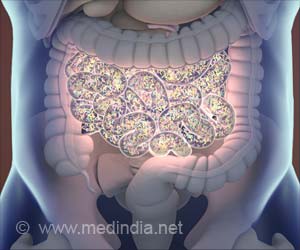Over the past years, the gut’s nervous system is gaining rapid attention in the scientific community. Also known as, the “second brain,” the enteric nervous system houses the largest depot of neurons and glia outside of the brain.
There are almost 100 million neurons scattered along the gastrointestinal tract directly in the line of firethat can be stamped out by gut infections, potentially leading to long-term GI disease. A simple stomach bug thereby may cause havoc or damage.
‘Over the past years, the gut’s nervous system is gaining rapid attention in the scientific community. News study shows that gut macrophages respond to prior insult by shielding enteric neurons and further preventing them from dying off when future pathogens strike.’
Interestingly, the new study at the Rockefeller University showed that mice infected with bacteria or parasites develop a unique form of tolerance quite unlike the textbook immune response, as published in the journal Cell.
Gut Macrophages and Enteric Neurons
This explains how gut macrophages respond to prior insult by shielding enteric neurons and further preventing them from dying off when future pathogens strike. These findings may hold important clinical implications in conditions like irritable bowel syndrome (associated with runaway death of intestinal neurons).
“We’re describing a sort of innate memory that persists after the primary infection is gone. This tolerance does not exist to kill future pathogens, but to deal with the damage that infection causespreserving the number of neurons in the intestine”. “One speculation is that the number of enteric neurons throughout your life is set by early childhood infections, which prevent you from losing neurons after every subsequent infection,” says Rockefeller’s Daniel Mucida.
People who for some reason do not develop tolerance may continue to lose enteric neurons throughout their life with every subsequent infection. Future studies will explore alternative methods of protecting enteric neurons, hopefully paving the way for therapies.
Source: Medindia



